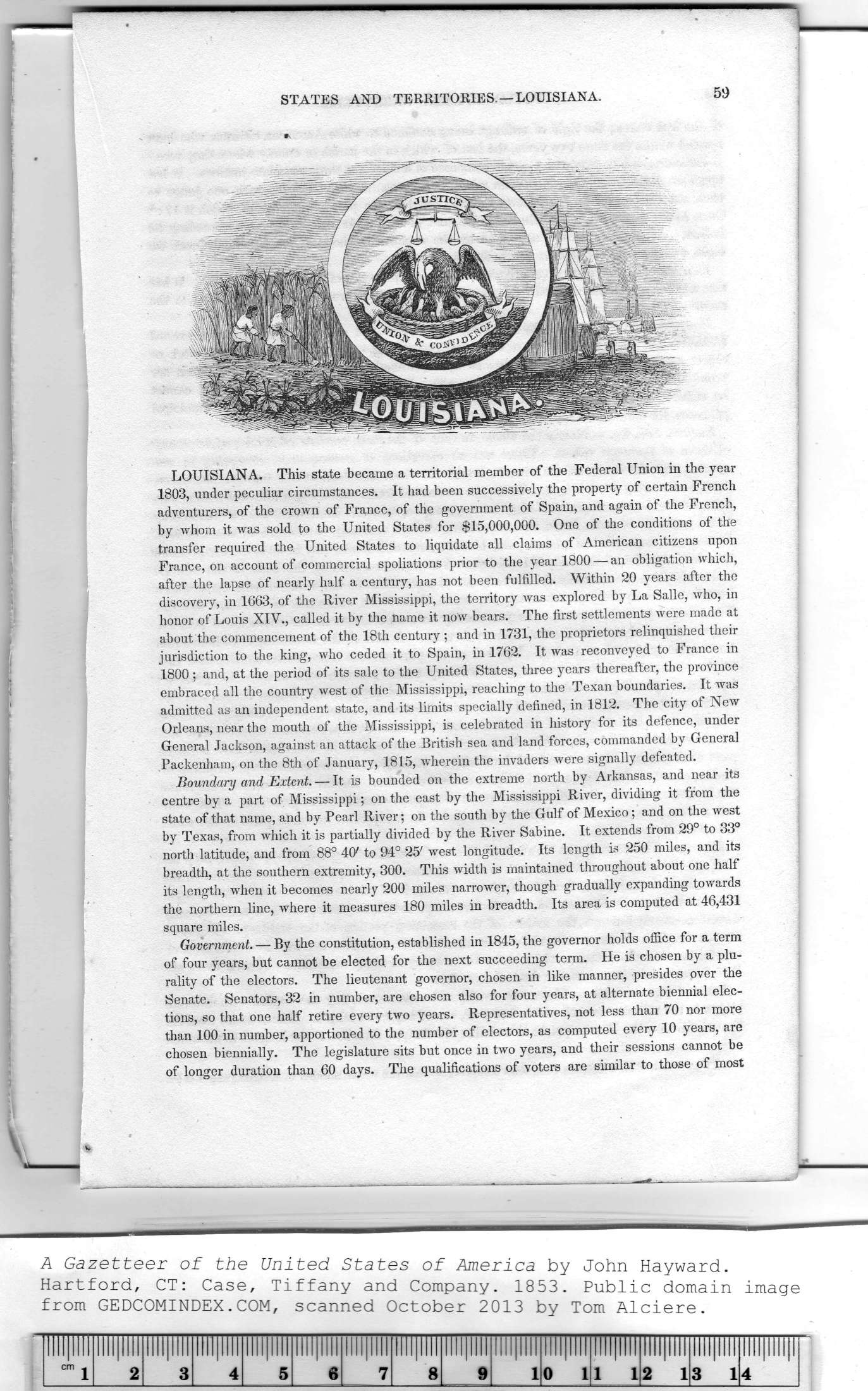|
|
Note: Ctrl and + increases the font size of the text below, Ctrl and - decreases it, and Ctrl and 0 resets it to default size.
STATES AND TERRITORIES.—LOUISIANA. 59
LOUISIANA. This state became a territorial member of the Federal Union in the year
1803, under peculiar circumstances. It had been successively the property of certain French
adventurers, of the crown of France, of the government of Spain, and again of the French,
by whom it was sold to the United States for $15,000,000. One of the conditions of the
transfer required the United States to liquidate all claims of American citizens upon
France, on account of commercial spoliations prior to the year 1800 — an obligation which,
after the lapse of nearly half a century, has not been fulfilled. Within 20 years after the
discovery, in 1663, of the River Mississippi, the territory was explored by La Salle, who, in
honor of Louis XIV., called it by the name it now bears. The first settlements were made at
about the commencement of the 18th century ; and in 1731, the proprietors relinquished their
jurisdiction to the king, who ceded it to Spain, in 1762. It was reconveyed to France in
1800 ; and, at the period of its sale to the United States, three years thereafter, the province
embraced all the country west of the Mississippi, reaching to the Texan boundaries. It was
admitted as an independent state, and its limits specially defined, in 1812. The city of New
Orleans, near the mouth of the Mississippi, is celebrated in history for its defence, under
General Jackson, against an attack of the British sea and land forces, commanded by General
Packenham, on the 8th of January, 1815, wherein the invaders were signally defeated.
Boundary and Extent. — It is bounded on the extreme north by Arkansas, and near its
centre by a part of Mississippi; on the east by the Mississippi River, dividing it from the
state of that name, and by Pearl River; on the south by the Gulf of Mexico; and on the west
by Texas, from which it is partially divided by the River Sabine. It extends from 29° to 33°
north latitude, and from 88° 40' to 94° 25' west longitude. Its length is 250 miles, and its
breadth, at the southern extremity, 300. This width is maintained throughout about one half
its length, when it becomes nearly 200 miles narrower, though gradually expanding towards
the northern line, where it measures 180 miles in breadth. Its area is computed at 46,431
square miles.
Government. — By the constitution, established in 1845, the governor holds office for a term
of four years, but cannot be elected for the next succeeding term. He is chosen by a plu-
rality of the electors. The lieutenant governor, chosen in like manner, presides over the
Senate. Senators, 32 in number, are chosen also for four years, at alternate biennial elec-
tions, so that one half retire every two years. Representatives, not less than 70 nor more
than 100 in number, apportioned to the number of electors, as computed every 10 years, are
chosen biennially. The legislature sits but once in two years, and their sessions cannot be
of longer duration than 60 days. The qualifications of voters are similar to those of most
A Gazetteer of the United States of America by John Hayward.
Hartford, CT: Case, Tiffany and Company. 1853. Public domain image
|
